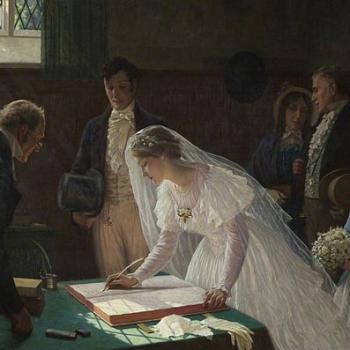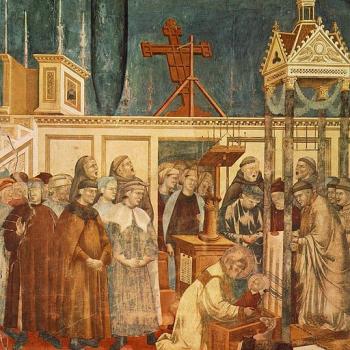Since Dylann Storm Roof attacked the Emmanuel AME Church in Charleston in 2015, the question of the Confederate flag and Confederate monuments has been a national topic of discussion. These had been an issue for African-Americans for much longer: for instance, the NAACP had boycotted South Carolina from 2000 to 2015 because of its refusal to remove the Confederate flag from the grounds of the state capitol. It began flying over the capitol in 1962 as a symbol of resistance to the Civil Rights movement; in 2000 a compromise removed it from the dome but left it in a place of honor on the grounds.
I arrived in Alabama to start my new job as the controversy over Confederate symbols was raging. Shortly after Roof’s attack, the state legislature in South Carolina voted to remove the Confederate flag from the state capitol grounds, and other states, such as Alabama, quietly followed suit. On the other hand, Mississippi still refuses to remove it from their state flag. The pushback from certain segments of the public was remarkable, with numerous people arguing that the Confederate flag was “heritage, not hate.” What surprised me was the number of Northerners in my Facebook feed who advanced this argument, claiming that “PC social justice warriors” wanted to “erase history.” (The more blatantly racist, North and South, argued that the Civil War was never about slavery, the words of the leaders of the Confederacy notwithstanding.) I never bought the argument about “heritage” as there is a very big difference between remembering history and memorializing it. Moreover, as historians have amply demonstrated, remembrance and memorializing the Confederacy is inextricably intertwined with Jim Crow, White supremacy, and the violent opposition to the Civil Rights movement. (More on this below.)
Here in Tuscaloosa the issue is a bit more subdued. The only Confederate memorials in Tuscaloosa that I am aware of are a cenotaph in a local cemetery, and a plaque somewhere on the campus of the University of Alabama. (I am told it is at the main library, but I have never seen it.) We also have a building named for John Tyler Morgan, US Senator from Alabama after Reconstruction, a staunch racist and segregationist and possibly grand knight of the KKK. (Since the building contains the English department, there has been a drive to remain the building Harper Lee Hall, after the most famous alumna of UA.) There are a variety of monuments in other parts of the state. In what was widely interpreted as a political move in light of the upcoming election, Governor Kay Ivey signed a bill making it illegal to remove Confederate memorials without prior authorization from the state. In response, the mayor of Birmingham built a large plywood wall around the Confederate Solider and Sailors Monument, effectively obscuring it from view.
So why am I writing about this now? A couple of things brought it back to my attention. Over Memorial Day weekend a patriotic meme circulated that criticized “erasing history.” I was briefly amused because if you examine the image closely, you will see that it is a tombstone for a veteran of the 22nd Pennsylvania, a Union regiment. (And no one is suggesting that Confederate cemeteries be dug up.) But with this in my mind, I began to notice a number of articles from the Southern Poverty Law Center project Whose Heritage? about the thousands of Confederate monuments still in place throughout the South.
Today I saw an SPLC article about a monument in Georgia dedicated to Captain Henry Wirz, Commandant of the notorious Andersonville Prison, and one of only two men executed for war crimes after the Civil War. It was, on the surface, a perfect example of the bankruptcy of the “heritage, not hate” argument: it seems impossible to justify a memorial to a war criminal. (A nagging voice from the Left is mentioning Columbus at this point, but I am going to silence it for now.) I decided to read a little bit more, however. My family and I are taking a road trip this summer to visit a bunch of Civil War battlefields, and on the route we have planned, the second stop is Andersonville. (The first is the new lynching memorial in Montgomery, which seems a fitting prelude to the unfinished business of the Civil War.)
The bits and pieces I found online (mostly Wikipedia and some related links) make it clear that like all history, the story is complicated. Andersonville was a barbaric place, with 10s of thousands of prisoners packed into a stockade without adequate food, shelter or drinking water. 13,000 of the 45,000 Union prisoners there died in a period of 14 months. Wirz was the commandant and as the saying goes, “the buck stops here.” However, the evidence is mixed as to whether he was (at one extreme) a sadistic pig on the order of Rudolf Hoess, Commandant of Auschwitz, or (at the other) a conscientious officer trying to do his best despite too many prisoners and without access to to adequate supplies. And it seems likely that his trial was a show trial with a foreordained conclusion. This summary of his trial, written by law students, is both detailed and damning. But even this is complicated, given the other prosecutions carried out by the Union after the war: see here.
But even if his trial was a travesty of justice, it still unsettling to see a monument to him. The story behind the monument, however, lays clear why it was built. Shortly after the war ended, a national military cemetery was established at Andersonville, and markers erected to the thousands who died there. Decades of work went into sorting out who was buried there. The cemetery became a monument to the Union cause. In the post Reconstruction era, as the myth of the noble “Lost Cause” became part of the ideological bedrock of a resurgent White South, it would be only natural that a revised version of what happened at Andersonville would be constructed. As part of this, the United Daughters of the Confederacy dedicated a monument to Wirz in 1909. What happened at the prison was elided over, and blame was shifted from Wirz and laid on the Union policy of not exchanging prisoners with the Confederacy, personified in General Grant. (See the inscriptions on the monument at the previous link.) This reading overlooks the fact that the South was responsible for ending the prisoner exchange agreements in 1863 when they announced that Black soldiers who were captured would not be exchanged. The Union insisted that all prisoners be treated equally, and ceased exchanges. Late in 1864, the Confederacy tried to reverse course, but the Union at that point decided not to resume exchanges. For a good summary, see here.
In short, the monument is less about one particular Confederate soldier who might have been a war criminal, and more about upholding a vision of the noble Confederate cause and the perfidy of the Union. It is about shaping a self-understanding of the South as a bastion of White civilization. So if it is about heritage, it not a heritage to be proud of.
Does this mean that the monument should be destroyed? Well, truthfully, if it were blown up tomorrow, I would shed no tears. But a more appropriate solution would be to convert it from a memorial to history. It should be uprooted from the center of Andersonville and moved to the national museum at the prison, and made part of an exhibit about the Lost Cause and the shaping of Southern identity. It would no longer be memorializing Wirz but would instead be remembering the uses to which his memory were put.
As Catholics, we should be very sensitive to the role that memory and history play in our identity. The mass itself is (among other things), a memorial. The eucharistic prayer functions as anamnesis: we remember the death and resurrection of Christ in order to make it present in our lives. But we also need to recall the ways in which we have used and misused our own history, creating myths about ourselves that let us pretend something about ourselves rather than acknowledging that we have often fallen short. (For a recent example that deserves its own separate discussion: the tragic story of Edgar Mortara resurfaced a few months ago, with substantially different interpretations being offered. It began with the article by Cessario in First Things which offered a painful rationalization of the event. It was followed by numerous responses: see for instance the article in Commonweal. For an interesting analysis that indirectly touches on questions of history versus memorial, see here.) The example of Confederate monuments should serve as an example and a warning to us to not cling too tightly to the stories we tell about ourselves. To paraphrase St. Francis, as a Church we are what we are in God’s eyes, nothing more and nothing less.












